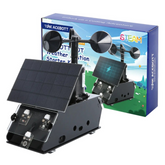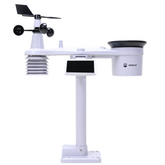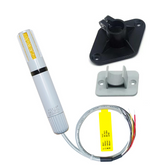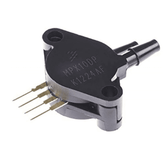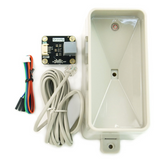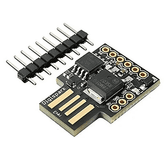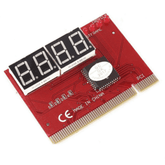5 Instruments to Measure Wind Speed and Their Uses
Summary
Have you ever stood on a hill, felt the wind rush past your face, and wondered just how fast it was moving? It’s a force of nature we experience daily yet quantifying it requires more than just a feeling.
Just as a speedometer tells you how fast your car is going, a special set of tools is needed to give us a precise reading of the wind's velocity.
The primary instrument for this job is the anemometer. But not all anemometers are the same. From simple rotating cups to sophisticated laser systems, the technology for measuring wind has evolved over the years.
These instruments provide essential data that keeps us safe, powers our cities, and helps us understand the complex patterns of our planet's atmosphere.
Let’s explore the fascinating world of these devices and discover how they work and why they are so important.

5 Types of Instruments to Measure Wind Speed
There are several distinct methods used to measure the speed of wind, each with its own unique mechanism and ideal application.
The most common type of anemometer relies on a mechanical principle, while others use sound, heat, or even light. Here are five key wind speed and direction instruments.
- Cup Anemometers: This is likely the image that comes to mind when you think of a wind-measuring device. A cup anemometer consists of three or four hemispherical cups mounted on arms that spin around a central axis. The wind catches in the cups, causing them to rotate. The faster the wind blows, the faster the cups spin. An internal mechanism counts these rotations over a set period to calculate wind speed. Because of their reliability and simplicity, these wind monitoring devices are a staple at weather stations and airports worldwide.
- Vane or Propeller Anemometers: Similar in principle to a cup anemometer, this type uses a small propeller instead of cups. The propeller is designed to face directly into the wind, often with the help of a tail fin or wind vane. As the wind blows, it spins the propeller blades, and the rotational speed is translated into a wind speed reading. Because they must align with the wind, these devices are excellent wind speed and direction instruments, providing two crucial pieces of data simultaneously.
- Sonic Anemometers: Moving into the realm of high-tech measurement, sonic anemometers have no moving parts. Instead, they use ultrasonic sound waves to measure wind velocity. The device has multiple transducers that send and receive sound pulses across a small, open space. The wind affects how quickly these pulses travel from one transducer to another. By measuring the tiny differences in travel time along different paths, the instrument can calculate both wind speed and direction with exceptional accuracy.
- Hot-Wire Anemometers: This clever device works on the principle of heat loss. It features a very thin, electrically heated wire that is exposed to the air. When the wind blows across the wire, it has a cooling effect, which changes the wire's electrical resistance. The instrument measures this change in resistance and uses it to determine the wind's velocity. Hot-wire anemometers are extremely sensitive and are perfect for measuring rapid, turbulent airflows, making them invaluable in applications like aerodynamics research and HVAC system analysis.
- Laser Doppler Anemometers (LDA): An LDA uses a beam of light to measure wind speed. The laser beam is split in two, with one beam shot into the airflow. As tiny particles naturally present in the air (like dust or water droplets) pass through the intersection of the beams, they scatter the light. The instrument detects the frequency shift (Doppler effect) in the scattered light, which is directly proportional to the speed of the moving particles—and thus, the wind. This is one of the more complex instruments that measures wind speed and wind pressure dynamics by observing particle movement.
How Does an Anemometer Work?
Now, let’s look at how each of these 5 types of anemometers works. The core principle is the same for every anemometer.
It works by measuring the effect that moving air has on a specific, measurable physical property.
While some rely on straightforward mechanics, others employ advanced physics to provide a reading.
How anemometers work depends entirely on their design. Here is a breakdown of the working principles for the five main types of wind speed and direction instruments.
- Cup Anemometer: This traditional anemometer operates on the principle of kinetic energy transfer. The wind pushes against the open, concave side of the cups with more force than it does against the rounded, convex side. This pressure difference causes the entire assembly to rotate. The device is calibrated so that the rate of rotation is directly proportional to the wind speed. An electronic sensor or a magnetic switch counts how many times the cups spin over a set period, and the instrument uses this count to calculate wind speed.
- Vane or Propeller Anemometer: Functioning much like a miniature windmill, a vane anemometer uses a propeller that spins as wind passes through its blades. The speed of this rotation corresponds directly to the wind's velocity. A key feature of this design is the tail fin, or wind vane, which orients the propeller so it always faces directly into the wind. This dual-function design allows it to act as one of the most effective wind speed and direction instruments, measuring both variables simultaneously.
- Sonic Anemometer: This modern instrument operates without any moving parts, instead using the "time of flight" principle with sound waves. It features multiple ultrasonic transducers that continuously send and receive pulses of sound across an open path. Wind blowing through this path either speeds up or slows down the travel time of the sound pulses, depending on the wind's direction. By precisely measuring these minute time differences, the device can accurately determine both wind speed and direction.
- Hot-Wire Anemometer: This type of anemometer works based on the principle of convective heat loss. It utilizes an extremely thin, electrically heated wire exposed to the airflow. As wind moves past the wire, it cools it down, which in turn alters its electrical resistance. To maintain a constant temperature, the instrument must supply more electrical current. The amount of current required to keep the wire hot is directly related to the wind's velocity, allowing the device to make highly sensitive measurements.
- Laser Doppler Anemometer (LDA): This highly sophisticated instrument uses light to measure wind speed. An LDA works by splitting a laser beam into two and aiming them to intersect at a specific point in the airflow. Tiny, naturally occurring particles (like dust or water droplets) pass through this intersection and scatter the laser light. The movement of these particles causes a frequency shift in the scattered light—a phenomenon known as the Doppler effect. The instrument detects this shift to precisely determine the wind pressure, or speed, by measuring the velocity of the particles carried by the wind.
Applications of Wind Speed Measuring Instruments
The Uses of Anemometers extend far beyond just telling you if you need to bring a jacket. These instruments are critical tools in a vast range of industries and scientific fields where monitoring wind is essential for safety, efficiency, and discovery.
Anemometers are commonly used in the following areas:
- Weather Forecasting and Climate Science: This is the most obvious application. Meteorologists use data from networks of weather stations to track weather systems, issue storm warnings, and create forecasts. Long-term wind data is also crucial for Weather Tracking and modeling climate change.
- Aviation Safety: No pilot takes off or lands without knowing the wind conditions. Airports and helipads are equipped with anemometers and windsocks to provide real-time wind speed and direction data. This information is vital for ensuring safe takeoffs, landings, and ground operations.
- Renewable Energy Development: The wind energy sector is entirely dependent on accurate wind measurement. Before building a wind farm, developers use anemometers for months or even years to assess a site's potential. Once a wind turbine is operational, an integrated wind monitoring tool continuously measures the wind to optimize the turbine's orientation and protect it from damage in dangerously high winds.
- Marine and Maritime Operations: Sailors and ship captains have always been reliant on the wind. Modern cargo ships, fishing boats, and recreational sailors use anemometers to navigate safely and efficiently. On offshore oil rigs and platforms, continuous wind monitoring and Wind alarms are essential for operational safety.
- Building and Construction: Architects and structural engineers need to understand wind loads when designing tall buildings, long bridges, and other large structures. Wind tunnel tests using hot-wire and laser anemometers help ensure these structures can withstand the forces of extreme winds.
- Air Quality Monitoring: The speed and direction of the wind play a major role in how air pollution disperses. Government agencies use wind data to predict where smoke from wildfires or emissions from industrial plants will travel, helping to issue timely public health advisories.
- Agriculture: Farmers use wind speed data to determine the best times for spraying crops, as high winds can cause pesticides or fertilizers to drift away from their intended target. Wind data also helps in managing irrigation to prevent soil erosion.
Conclusion
From the simple, spinning cups on a weather station to the invisible laser beams tracking airflow over a jet engine, the instruments used to measure wind are as diverse as their applications.
They are the unsung heroes who enable accurate weather forecasts, ensure planes land safely, and help us harness the wind's power for clean energy.
By translating the invisible force of moving air into concrete data, these devices give us the knowledge needed to work with nature, protect ourselves from its extremes, and build a more efficient and sustainable world.
The next time you feel a gust of wind, you can appreciate the complex science and sophisticated technology dedicated to understanding its every move.



